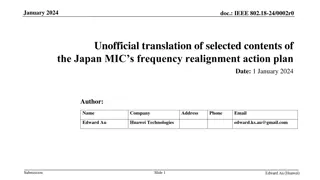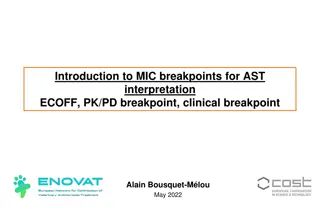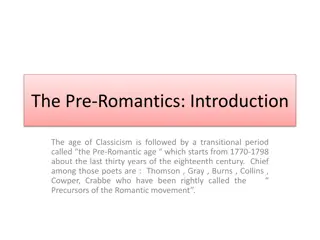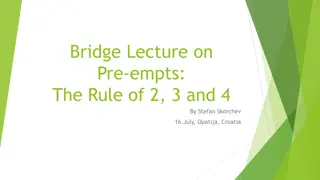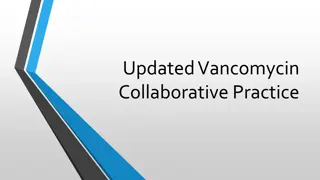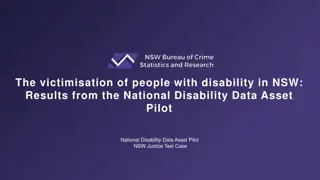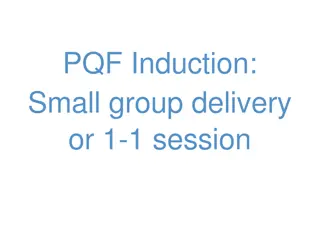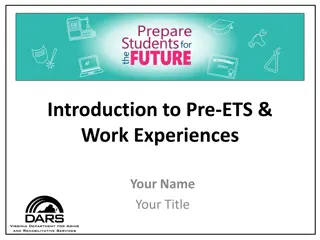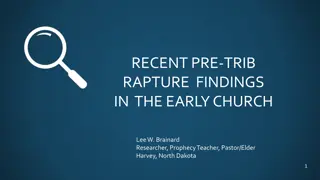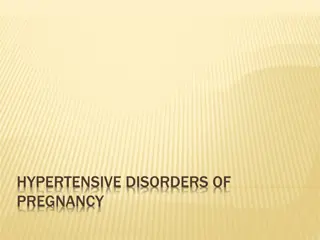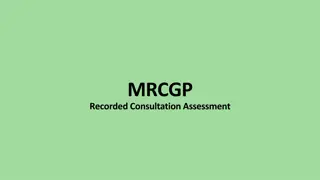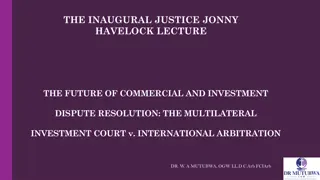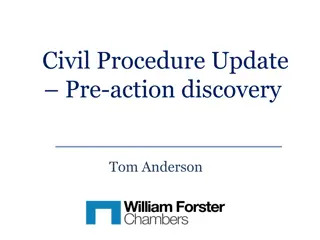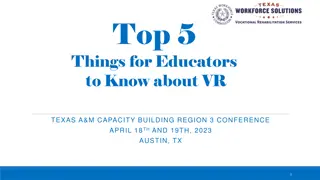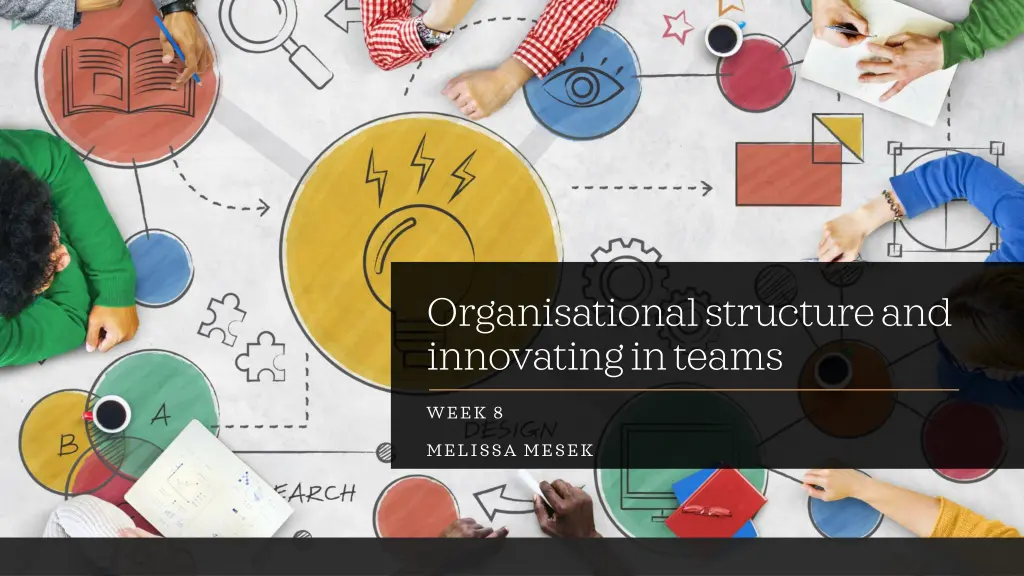
Key Components for Organizational Innovation
Discover the essential components for fostering innovation in an organization, including shared vision, leadership, effective team dynamics, and a creative climate. Learn about the impact of leadership on transformational change, characteristics of effective leaders, and the importance of a supportive structure. Explore Mintzberg's Structural Archetypes and reflect on your team role utilizing Belbin's Framework.
Download Presentation

Please find below an Image/Link to download the presentation.
The content on the website is provided AS IS for your information and personal use only. It may not be sold, licensed, or shared on other websites without obtaining consent from the author. If you encounter any issues during the download, it is possible that the publisher has removed the file from their server.
You are allowed to download the files provided on this website for personal or commercial use, subject to the condition that they are used lawfully. All files are the property of their respective owners.
The content on the website is provided AS IS for your information and personal use only. It may not be sold, licensed, or shared on other websites without obtaining consent from the author.
E N D
Presentation Transcript
Organisationalstructure and innovating in teams WEEK 8 MELISSA MESEK
To understand components for innovation in an organisation To learn about leadership and its impact on transformational change To look at the difference between moderating and mediating variables to understand Mintzberg's Structural Archetypes and its implications for innovation Objectives To learn about high-involvement in innovation and its importance for an organisation To identify the difference between groups and teams a well as characteristics of effective teams To assess how different factors can support or hinder innovation and entrepreneurship To reflect on your own team role utilizing Belbin s Framework for Team Roles
Which components are vital in an organization to become innovative? Shared vision, leadership and the willingness for innovation Champions of innovation key stakeholders The right kind of structure Effective team working Innovation across the entire organization A creative climate External focus
Three dimensions of leadership: concern for task, concern for people and concern for change How leadership contributes to transformational The contributions that leaders make to the performance of their organization can be noteworthy. Leaders do so by being creative and showcasing a vision that they work towards implementing throughout their day-to-day operations. changes Researchers have found a long list of characteristics of leaders, but there is no universal list that good leaders must posses in order to be effective see next slide
Some characteristics of a good leader Are accountable and step up to lead the action Bright, alert and intelligent Skilled in their area of expertise Showcase competencies in social interactions and administrative tasks Energetic, active, resilient Good communicators
Leadership for innovation
Mintzberg utilised the previous academic debate in the area of 'structure' in order to develop a series of archetypes into which organisations' structures are likely to fall. Mintzberg s (1979) Structural Archetypes and its innovation implications 6 archetypes which are Simple Structure; Machine bureaucracy; Divisionalised Form; Professional bureaucracy; Adhocracy and Mission oriented structure
> controlled centrally > usually 1 person / start-up business, for example garage businesses Mintzberg s Theory - Simple Structure > Strength: Speed to respond to changes and transparency towards vision and mission, high creativity, energy and enthusiasm > Weaknesses: no long-term stability, only organic growth possible, high dependance of key innovator
> designed like a complex machine with employees keeping the cogs of the machine running > cascades responsibility downwards and breaks complex tasks down, to the point where they are easily and quickly interchangeable Mintzberg s Theory - Machine Bureaucracy > Strength: possible to manage complex tasks, building routines > Weaknesses: No focus on individual employee, overreliance on routines, inflexibility of organization when faced with changes, limited innovation capabilities as needs to come from specialists
> more pertinent in larger organisations > characterized by a decentralised organic structure which can adapt to local challenges in the environment and semi-independent units which are highly specialised Mintzberg s Theory - Divisionalized Form > Strength: ability to move into niche areas easily as well as sharing their knowledge across the whole organisation > Weaknesses: conflict that can arise due to the decentralised fashion of the organisation which can jeopardise sharing knowledge and the decentralised R&D efforts.
> the organisation is decentralised with the power on the individuals > control is achieved through consensus on 'standards', such as professionalism. Mintzberg s Theory - Professional Bureaucracy > employees are highly skilled and have high levels of autonomy > Strengths: highly skilled employees and their ability to build effective teams > Weaknesses: difficulties around managing these types of employees
> can be utilised to deal with uncertainty and complexity of the organisation > Adhocracy, in management theory, is the opposite of bureaucracy and with that offers a high level of flexibility Mintzberg s Theory - Adhocracy > key features is its focus on teams but also ability to work autonomously >Rules and structures are reduced to the essential ones which are needed to carry out the task Strengths: the power to deal with high levels of uncertainty; high creativity levels Weaknesses: potential for unsettled conflict and an absence of control due to its informal structures to hinder organisation
> based on a commonly shared value(s) by all members with a usually altruistic purpose Mintzberg s Theory - Mission oriented > Strengths: high engagement of employees and their own initiative because of the shared values to achieve an overall goal > Weaknesses: lack of control exercised and a potential overreliance on one innovator to drive the mission and vision forward.
High involvement in innovation > almost everybody has the skill set of creative thinking > finding the structures and processes that work for an organization is crucial in order to innovate effectively across an organization > innovating across the organization and combining skill sets in order to create incremental and radical innovations > Example of Toyota: Japanese mindset of 'kaizen' which translates to 'continous improvement'
The five-stage high- involvement innovation (HII) model Source: (Tidd and Bessant, 2021, p. 184)
Difference of Groups and Teams > A group is an assembly of people who are physically close to each other > A team means a combination of individuals who come together for a shared purpose in their organization (Tidd and Bessant, 2021, p. 186)
Characteristics for effective team work A clear, common and elevating goal results- driven structure competent team members unified commitment external support and recognisition collaborative climate standards of excellence principled leadership participation in decision- making appropriate use of team team spirit
Key elements in effective high- performance team working include: > good balance of team roles and match to individual behavioural style > clearly defined tasks and objectives > effective team leadership > effective conflict resolution mechanisms within the group > continuing liaison with external organisation
Challenges in effective team management Group vs Team Ends vs Means Structured Freedom Support Structures and Systems Assumed Competency
Belbins (2004) Framework for Team Roles Belbin is a popular framework which is utilised for creating diverse teams with high capabilities. It showcases nine main roles that can be assumed in a team, however, it also argues that most individuals are only comfortable in 2-3 roles (see next slide) > Link to Belbin's test: https://www.belbin.com/resources/free-belbin-test- looking-for-a-free-team-roles-test
Belbins team roles #2 Coordinator: identifies talent and delegates effectively, but can be perceived as manipulative Team worker: cooperative, but can also be indecisive Resource investigator: develops contacts, but can be too optimistic Plant: creative problem solver, but can lack detail Specialist: deep knowledge and experience, but can be too narrow Shaper: highly driven, but can be insensitive and become aggressive Implementer: practical and pragmatic, but can be inflexible Monitor evaluator: strategic focus, but can be overly critical Completer finisher: polishes and perfects outcomes, but prone to pessimism Tidd and Bessant, 2021, p. 187
To understand components for innovation in an organisation To learn about leadership and its impact on transformational change To look at the difference between moderating and mediating variables to understand Mintzberg's Structural Archetypes and its implications for innovation Objectives To learn about high-involvement in innovation and its importance for an organisation To identify the difference between groups and teams a well as characteristics of effective teams To assess how different factors can support or hinder innovation and entrepreneurship To reflect on your own team role utilizing Belbin s Framework for Team Roles
References Belbin, M. (2004). Management teams Why they succeed or fail. London: Butterworth- Heinemann. Khan, M. S., Khan, I., Qureshi, Q. A., Ismail, H. M., Rauf, H., Latif, A., & Tahir, M. (2015). The styles of leadership: A critical review.Public Policy and Administration Research,5(3), 87-92. Mintzberg, H. (1979). The structuring of organisations. Englewood Cliffs. J: Prentice- Hall. Tidd, J. & Bessant, J. (2021). Managing Innovation Integrating Technological, Market and Organizational Change. Seventh Edition. Hoboken: Wiley.

